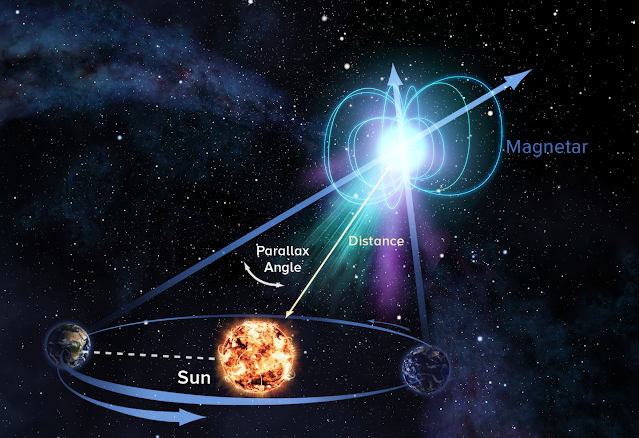A magnetar is a type of neutron star, which is an extremely dense and compact object formed from the collapsed core of a massive star. Magnetars are characterized by their extremely strong magnetic fields, which are trillions of times stronger than the Earth's magnetic field.
The magnetic fields of magnetars are so strong that they can affect the properties of matter in their vicinity, causing the emission of high-energy radiation such as X-rays and gamma rays. These emissions can be observed by telescopes and provide scientists with valuable information about the behavior of matter under extreme conditions.
Magnetars are thought to be formed from the collapse of massive stars, and there are currently only a few dozen known magnetars in the Milky Way galaxy. They are among the most powerful objects in the universe, and their extreme magnetic fields make them one of the most fascinating objects in astrophysics.
Magnetars are formed when a massive star undergoes a supernova explosion and collapses. Neutron stars are composed almost entirely of neutrons, with a mass about 1.4 times that of the sun but with a radius of only about 10 kilometers.
What sets magnetars apart from other neutron stars is their incredibly strong magnetic fields. Magnetars have magnetic fields that are hundreds to thousands of times stronger than those of typical neutron stars, with field strengths ranging from about 10^13 to 10^15 Gauss (for comparison, the Earth's magnetic field is about 0.5 Gauss). The origin of these strong magnetic fields is not fully understood, but it is thought to be related to the rapid rotation of the neutron star and the processes that occur during its formation.
The strong magnetic fields of magnetars give rise to a variety of unique and extreme phenomena. One of the most notable is the emission of high-energy radiation, including X-rays and gamma rays. Magnetars are thought to be responsible for a type of gamma-ray burst known as a soft gamma-ray repeater (SGR), which involves a series of intense bursts of X-rays and gamma rays.
Magnetars also exhibit a phenomenon known as "magnetar flares," which are sudden and extremely energetic releases of magnetic energy that can produce gamma-ray bursts, X-ray bursts, and even visible light flashes. These flares can release more energy in a few seconds than the Sun emits in years.
Due to their extreme conditions and unique properties, magnetars are the subject of intense study by astrophysicists. The study of magnetars provides insights into the behavior of matter under the most extreme conditions in the universe and can help us better understand the formation and evolution of neutron stars.
Source: Some or all of the content was generated using an AI language model


No comments:
Post a Comment